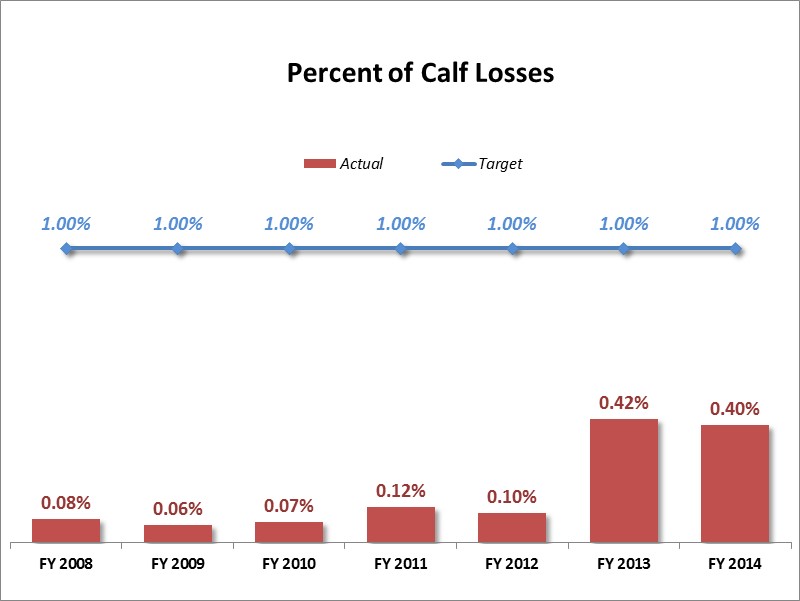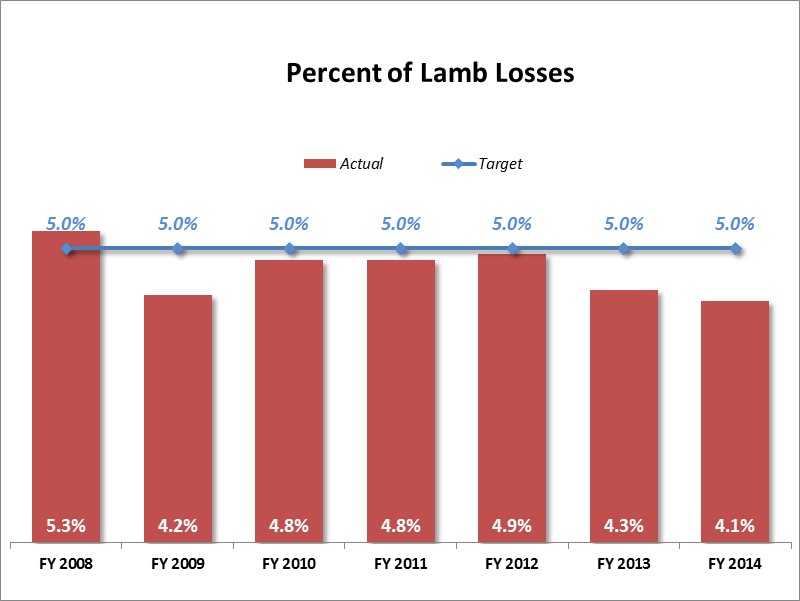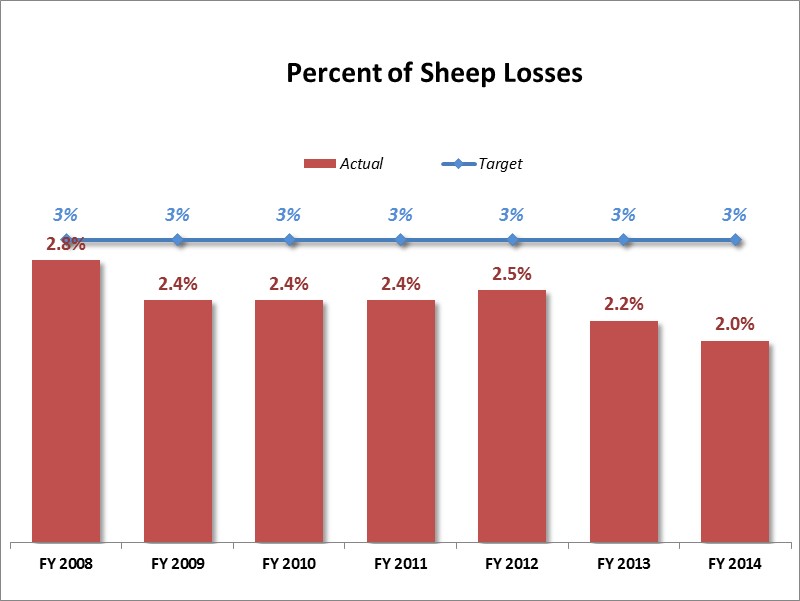The objective of the Predatory Animal Control program is to minimize livestock and wildlife losses to predators on private, state and federal land. This objective is met by using non-lethal and some lethal control methods. Every year Utah woolgrowers lose about 10% of their animals to predators. Cattle ranchers suffer losses to coyotes, mountain lions, bears, and other predators. Annual livestock losses to predators cost an estimated $3 million even with the program in place.
The program must maintain a balance, and not only be responsive to predation losses, but must be selective in the removal of predators to meet objectives of DWR. Corrective control of cougar and bear losses is conducted only after livestock kills are confirmed, while preventative control of coyote damage is used to reduce depredation of sheep and calves. Also, the program coordinates with DWR to remove predators that prey on vulnerable wildlife populations, such as specific mule deer herds, threatened and endangered species, or reintroduced populations of native wildlife.
During the 2015 General Session, the Legislature appropriated for Fiscal Year 2016, $1,647,200 from all sources for Predatory Animal Control. This is a 20.7 percent increase from Fiscal Year 2015 revised estimated amounts from all sources. The total includes $819,300 from the General/Education Funds, an increase of 3.1 percent from revised Fiscal Year 2015 estimates.
The following are the top measures chosen by the agency management to gauge the success of this program.
Percent of Calf Losses
Calf Losses: The figure below presents the percent of calf losses due to predators over time. The program has exceeded the goal of this measure and kept the calf losses to much less than 1%.

Percent of Lamb Losses
Lamb Losses: The third measure tracks the percent of lamb losses due to predators over time.

Percent of Sheep Losses
Sheep Losses: The second measure tacks the percent of sheep losses due to predators over time. The program has exceeded the goal of this measure and has kept the sheep losses to less than 3%.

The Predatory Animal Control program operates under guidance of the nine-member Agricultural and Wildlife Damage Prevention Board. The Commissioner and the Director of the Division of Wildlife Resources (DWR) serve as the board's chair and vice chair. This line item consists of just one program.
This program is a cooperative effort between the USDA Animal and Plant Health Inspection Service (APHIS) and the Utah Department of Agriculture and Food. The cooperative program is jointly financed, with the federal government paying about half of the cost.
The primary funding source is the General Fund (including General Fund transfers from the Division of Wildlife Resources), although some funding comes from the General Fund Restricted - Agricultural and Wildlife Damage Prevention Fund. Revenue to the restricted account comes from annual predator control fees (nicknamed a "head tax") imposed on sheep, goats, cattle and turkeys that the program is designed to protect. Some of the revenue from sheep and fleece also goes to fund the Sheep Promotion program.
UCA 4-23-9 requires the department to request General Funds at least equal to 120 percent of the money collected from the "head tax" during the previous fiscal year. The Legislature's base appropriation is approximately two times this statutory minimum.
COBI contains unaudited data as presented to the Legislature by state agencies at the time of publication. For audited financial data see the State of Utah's Comprehensive Annual Financial Reports.